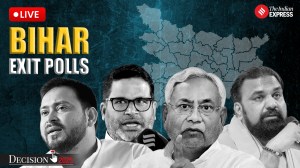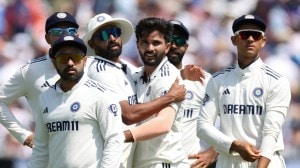F1 gets its formula wrong in NASCAR land
Formula One racing might be all the rage on the streets of Monaco, a hit in cities from Istanbul to Sao Paolo, but the bizarre events at Ind...

Formula One racing might be all the rage on the streets of Monaco, a hit in cities from Istanbul to Sao Paolo, but the bizarre events at Indianapolis Motor Speedway this weekend reaffirmed that Europe’s glitzy, upper-crust sport cannot seem to win in a land where NASCAR (stock-car racing) reigns supreme.
Marketing experts were quick to assess the damage. ‘‘You had a debacle,’’ said Marc Ganis, a sports consultant based in Chicago. ‘‘That’s very unfortunate when you’re a sport that is trying to break out, as F1 is trying to do in the US.’’
This PR pratfall served to underscore the differences between Formula One and wildly popular NASCAR. Formula One cars are widely believed to be the most technologically advanced in all of racing. They speed along winding courses, often in exotic locales.
NASCAR features souped-up Fords, Chevrolets and Dodges whose lineage can be traced to the hot rods that bootleggers once drove. They race on ovals in places such as Martinsville, Virginia, and Talladega, Alabama.
On the same day that Formula One allowed a boycott to mar its image, NASCAR was showing an unceasing hunger to market to the public, calling its Michigan race the ‘‘Batman Begins 400’’ to draw on Hollywood hype. ‘‘You have to be culturally relevant,’’ said Paul Swangard, managing director of the Warsaw Sports Marketing Center at the University of Oregon. ‘‘The NASCAR product is a little more core to the US fan.’’
Formula One racing does not face this dilemma in other parts of the world, where it ranks shoulder-to-shoulder with soccer in popularity. Yet, much like football, the international circuit has struggled to gain a foothold in this country since the first race in 1959.
Each year since 2000, when the race moved to Indianapolis, crowds have steadily declined. The sport has been accused of behaving arrogantly, declining to promote itself aggressively in the US, refusing to make its drivers accessible to media and fans. ‘‘I’ve got to think these guys just don’t get it,’’ said Jim Liberatore, the outgoing president of Speed Channel.
Even track officials at Indianapolis have complained. In 2000, Mari Hulman George, the chairman of the board and mother of Speedway president Tony George, tried to enter her private suite for the US Grand Prix and was told she lacked the proper credentials. ‘‘I own this place,’’ she reportedly said. To which a Formula One security guard replied: ‘‘Not today you don’t.’’
Bernie Ecclestone, the billionaire who owns the rights to the circuit and serves as its controlling figure, did not help matters last week when he mused about Indy car driver Danica Patrick, the rookie sensation who placed fourth in the recent Indianapolis 500.
‘‘She did a good job, didn’t she? Super. Didn’t think she’d be able to make it like that,’’ Ecclestone told a gathering of reporters. He added: ‘‘You know, I’ve got one of these wonderful ideas that women should all be dressed in white like all the other domestic appliances.’’
While that comment might not have endeared him to American fans, the F1 chief seems to appreciate the potential for marketing his sport in the US and was distraught by what happened Sunday. ‘‘I’m furious with the stupidity,’’ he told The Times, adding: ‘‘We were just starting to build a great image in the USA on television and with the fans, and that just went out the window.’’
Yet, even with all this turmoil, Speedway officials in Indianapolis reported that approximately 100 people lined up on Monday to renew their grand prix tickets for next year.
And experts cautioned against declaring that Formula One is finished in America. ‘‘I’m not ready to say this is the death knell,’’ Swangard said. ‘‘It’s a sport that has a global footprint. It would be logical to see them here.’’
The marketing expert quickly added: ‘‘Just with more than six cars.’’
(LA Times-Washington Post)



- 01
- 02
- 03
- 04
- 05




























